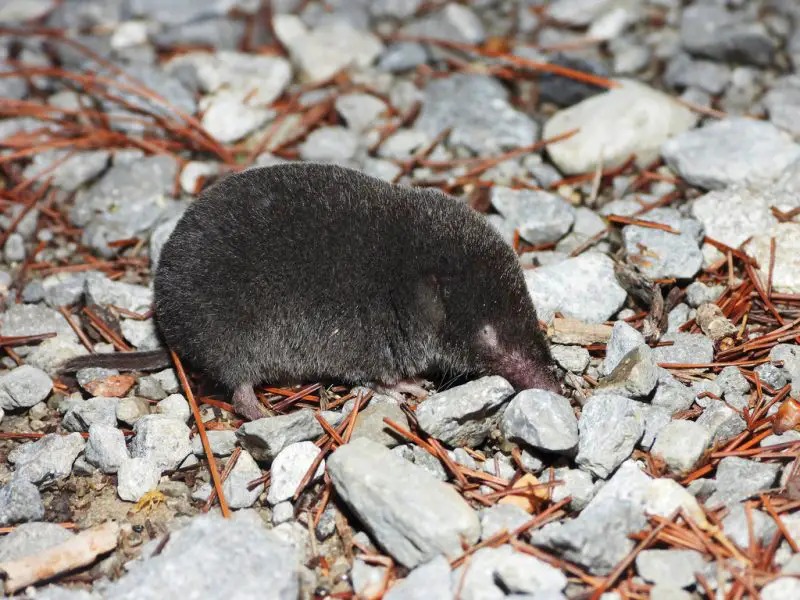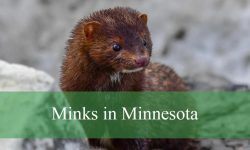The forest floor of Wisconsin never truly sleeps. Beneath the damp leaves and mossy roots, a flurry of motion unfolds — small, unseen, yet constant. A blur of gray darts between fallen twigs, disappearing into the leaf litter. The air stirs faintly with its passing, and silence returns. These tiny, restless creatures are shrews in Wisconsin, the secret keepers of the forest’s underworld.
To most people, shrews go unnoticed — too small, too fast, too quiet. But these insect-eating mammals play one of the most vital roles in the Great Lakes ecosystem. Their metabolism runs like a fire, their hunger endless, and their existence a testament to nature’s hidden precision.
In this detailed article, we’ll uncover the truth about Wisconsin’s shrews — their species, behavior, diet, and ecological significance — revealing how these miniature predators sustain the life cycles of the forest that towers above them.
Meet Wisconsin’s Shrews
Small Mammals, Big Impact
Shrews in Wisconsin belong to the family Soricidae — one of the smallest yet most widespread mammal families on Earth. Though they resemble mice, they are not rodents but insectivores, more closely related to moles.
Adult shrews typically measure 3–5 inches long, including their tail, and weigh less than half an ounce. Their elongated snouts, tiny eyes, and sharp teeth are perfectly adapted for probing soil, leaf litter, and tunnels in search of prey.
Yet despite their size, they are among the forest’s most active predators. Each shrew must eat its own weight — sometimes more — every single day just to survive.
The Shrew Species of Wisconsin

Wisconsin is home to at least eight species of shrews, each adapted to specific habitats and climates:
-
Northern Short-tailed Shrew (Blarina brevicauda) — The largest and most common species, found statewide.
-
Masked Shrew (Sorex cinereus) — A tiny, fast-moving species thriving in moist forests and wetlands.
-
Pygmy Shrew (Sorex hoyi) — One of the smallest mammals in North America, weighing less than a dime.
-
Water Shrew (Sorex palustris) — A semi-aquatic species that hunts in streams and ponds.
-
Arctic Shrew (Sorex arcticus) — Found in northern Wisconsin’s colder, boreal zones.
-
Smoky Shrew (Sorex fumeus) — Prefers forested slopes and moist soil.
-
Long-tailed Shrew (Sorex dispar) — Lives in rocky outcrops and forested talus slopes.
-
Least Shrew (Cryptotis parva) — A southern species found in grasslands and open woods.
Each of these species occupies a unique niche within Wisconsin’s forests — from stream edges to mossy ridges — ensuring that no corner of the ecosystem goes unbalanced.
Anatomy and Adaptation
Designed for Life Underground
Shrews have evolved for life in the underworld of soil and leaves. Their long snouts and sensitive whiskers act as natural radar, detecting vibrations from insects and worms. Tiny yet powerful limbs allow them to dig through humus and roots in pursuit of prey.
Their fur is dense, velvety, and waterproof — a perfect defense against the damp Wisconsin climate. The water shrews in Wisconsin even have fringed hairs on their feet that help them swim and “walk” on the surface of still water, a spectacle rarely seen but remarkable to witness.
Their teeth are another marvel: tipped with iron, giving them a reddish tint and the hardness needed to bite through insect shells and small vertebrates.
A Metabolism Like Fire
The heart of a shrew beats up to 1,200 times per minute. Its breathing rate can exceed 700 times per minute. Such intensity requires near-constant eating. A shrew can die within hours if deprived of food.
This insatiable hunger drives its behavior. Day and night, through summer heat or winter frost, it hunts relentlessly, guided by touch and scent rather than sight. Its world is one of perpetual motion — a race between hunger and exhaustion.
This endless cycle makes shrews in Wisconsin essential to their ecosystems, controlling populations of insects, grubs, and small invertebrates that might otherwise overwhelm the soil.
Behavior and Daily Life
Solitary Hunters of the Forest Floor
Shrews are fiercely territorial. Each individual maintains its own small territory, which it defends through high-pitched squeaks and scent markings. When two shrews meet, they rarely tolerate each other — aggressive displays and brief chases usually end with one retreating.
They are active year-round, tunneling through snow in winter or navigating beneath fallen leaves in summer. Their tunnels crisscross like a hidden city beneath the forest surface, linking feeding grounds, resting chambers, and nesting areas.
The northern short-tailed shrew, the most dominant species, even establishes multiple food caches and resting spots within its territory, a strategy that helps it survive the unpredictable seasons of Wisconsin.
The Language of Scent and Sound
Though nearly blind, shrews communicate through high-frequency squeaks, chirps, and ultrasonic clicks. Some species even use echolocation, like bats, to navigate tight tunnels or hunt in darkness.
Their scent glands play a central role in communication — signaling territory boundaries, reproductive readiness, and identity. For a creature only inches long, their olfactory world is vast and intricate.
These chemical signals allow shrews in Wisconsin to maintain social order without visual cues — an evolutionary adaptation suited perfectly to their shadowy realm.
The Shrew’s Diet: Nature’s Pest Control
An Appetite Without Limits
Shrews are among the most voracious predators in proportion to their size. Their diet includes beetles, crickets, spiders, centipedes, worms, slugs, snails, and occasionally small frogs or mice.
The northern short-tailed shrew, in particular, has a shocking secret: it is venomous. Its saliva contains neurotoxins that paralyze prey, allowing it to subdue animals larger than itself. The shrew stores these victims alive in burrows for later feeding — a chilling yet efficient method of survival.
This makes shrews in Wisconsin forests one of the few venomous mammals in North America — a fact unknown to many who walk their forest trails daily.
The Role of Shrews in Ecosystem Health
By consuming insects and larvae that feed on roots and leaves, shrews act as natural pest control agents. They keep the balance between soil organisms and plant growth, ensuring healthy forest regeneration.
Their digging aerates the soil, improving water flow and nutrient circulation. In turn, their droppings add organic matter to the earth — a continuous cycle of decomposition and renewal.
Through sheer numbers and appetite, shrews in Wisconsin help maintain the health of both soil and vegetation — an invisible labor force beneath our feet.
Reproduction and Lifespan
Breeding Seasons and Maternity
Shrews breed from late spring through early autumn, depending on temperature and food supply. Females may produce up to three litters per year, each with 5–8 young.
Gestation lasts about three weeks, after which the female builds a soft nest of grass and moss, usually within a burrow or under a log. She nurses her blind, helpless young for about 20 days before they venture out to hunt on their own.
The entire life cycle of a shrew is fleeting — most live less than 18 months. Yet their rapid reproduction ensures that populations remain stable across Wisconsin’s forests.
Parental Care and Survival
Though small, shrew mothers are fiercely protective. They keep their young warm, groom them, and defend nests from predators. When relocating, the young may cling to each other’s tails, forming a “shrew train” that follows the mother to safety — a rare behavior among mammals.
Once independent, juveniles quickly disperse to claim their own territories, continuing the endless rhythm of life and death that defines shrews in Wisconsin.
Shrews and Wisconsin’s Forest Ecosystems
The Hidden Engineers
Shrews are keystone species — their activity influences every level of the forest ecosystem. By preying on insects that damage roots, they indirectly support tree health. Their constant tunneling improves soil aeration and seed germination.
Even their corpses, short-lived as they are, feed scavengers and decomposers, enriching the nutrient cycle. Each tiny body contributes to the grand architecture of Wisconsin’s living systems.
In a way, shrews in Wisconsin are silent gardeners — unseen but indispensable.
Prey and Predators
Despite their venom and agility, shrews are heavily preyed upon. Owls, snakes, foxes, weasels, and even large frogs feed on them.
However, their musky odor, produced by scent glands, often deters predators — a natural chemical defense that makes them unpalatable to many carnivores. Still, their sheer abundance ensures that they remain a cornerstone of the food web, providing sustenance for countless forest hunters.
Without shrews, many of Wisconsin’s nocturnal predators would struggle to find consistent prey.
Myths and Misconceptions
Are Shrews Mice?
No. Despite their appearance, shrews in Wisconsin are not rodents. They lack gnawing incisors and belong to an entirely different order. Their diet, physiology, and behavior set them apart from true mice.
Do Shrews Hibernate?
They do not. Unlike many small mammals, shrews remain active through winter, relying on their high metabolism to generate heat. They hunt beneath snow and frozen leaves, surviving the cold through sheer energy and persistence.
Are Shrews Harmful?
Not at all. They do not damage crops or property and pose no threat to humans. In fact, their insect-eating habits make them valuable allies for gardeners and foresters.
The Shrew’s Senses and Intelligence
Echolocation and Awareness
Though primitive compared to bats, shrew echolocation helps them navigate tight burrows and detect nearby obstacles. Their ultrasonic clicks bounce off surfaces, painting an acoustic map of their environment.
Combined with acute hearing and smell, this adaptation gives shrews in Wisconsin forests a sixth sense — one finely tuned to the dim, cluttered world beneath fallen leaves.
Memory and Learning
Studies have shown that shrews remember the locations of tunnels, caches, and food sources. They learn patterns of prey activity and adapt their hunting routes accordingly.
Their intelligence may not match larger mammals, but within their miniature world, they display remarkable awareness — a kind of instinctive strategy that keeps them alive in one of the harshest climates of the Midwest.
Human Connections and Conservation
Indicators of Environmental Health
Because shrews are sensitive to pollution and habitat degradation, their presence signals healthy forest conditions. They thrive only in environments with rich insect populations and undisturbed soil.
Monitoring shrews in Wisconsin provides scientists with insight into environmental changes. Declines in shrew populations can indicate pesticide contamination or soil imbalance long before these problems become visible in larger species.
Protecting the Smallest Predators
Although shrews are not endangered, habitat fragmentation and chemical use threaten local populations. Conserving forests, wetlands, and riparian zones ensures their survival.
Maintaining leaf litter, avoiding excessive raking, and limiting pesticide use in gardens can help sustain these hidden hunters — giving back to the natural systems that depend on them.
In preserving shrews, Wisconsin preserves the heartbeat of its forests.
Surprising and Little-Known Facts About Shrews in Wisconsin
-
Shrews eat every 2–3 hours — they can starve within five hours if deprived of food.
-
The northern short-tailed shrew is venomous — one of only a few poisonous mammals on Earth.
-
Shrews have red-tinted teeth due to iron deposits that strengthen enamel.
-
They can “walk” across water using surface tension for a few seconds.
-
Shrews’ heart rates can exceed 1,000 beats per minute.
-
They do not hibernate and remain active even beneath snow.
-
Their metabolism burns calories so fast they must eat 80–120% of their body weight daily.
-
They use echolocation to navigate dark, narrow tunnels.
-
A single shrew can consume hundreds of insects per night.
-
Their musky scent makes them unappealing to most predators.
FAQs About Shrews in Wisconsin
Are shrews native to Wisconsin?
Yes. Shrews in Wisconsin are native and widely distributed across forests, wetlands, and grasslands.
What do shrews eat?
They eat insects, worms, spiders, slugs, and small amphibians — anything small and moving.
Do shrews hibernate?
No. They stay active all year, using tunnels under snow to find food in winter.
Are shrews poisonous?
Only the northern short-tailed shrew has venomous saliva used to immobilize prey.
How long do shrews live?
Most live less than 18 months, though some survive up to two years in ideal conditions.
Do shrews make noise?
Yes. They produce ultrasonic clicks and high-pitched squeaks for communication and navigation.
Are shrews harmful to humans?
Not at all. They are beneficial predators that help control insects and pests.
How can I attract shrews to my property?
Maintain natural leaf litter, avoid pesticides, and provide native ground cover for insects.
What predators eat shrews?
Owls, snakes, foxes, and weasels are the main predators, though many avoid them due to their odor.
Are shrews endangered in Wisconsin?
No. Most populations are stable, but habitat conservation ensures long-term survival.
Final Thoughts
The shrews of Wisconsin forests may be small, but their influence is vast. Beneath the ferns and fallen logs, they live relentless lives — digging, hunting, breathing, and feeding the soil itself. Their existence sustains an entire web of life that few ever notice but that every tree and bird depends upon.
They remind us that not all heroes are large or loud. Some are measured in inches, not feet — in heartbeats, not years. The truth about shrews in Wisconsin is that they are nature’s tireless caretakers: unseen, essential, and enduring in their quiet dominion below the leaves.






